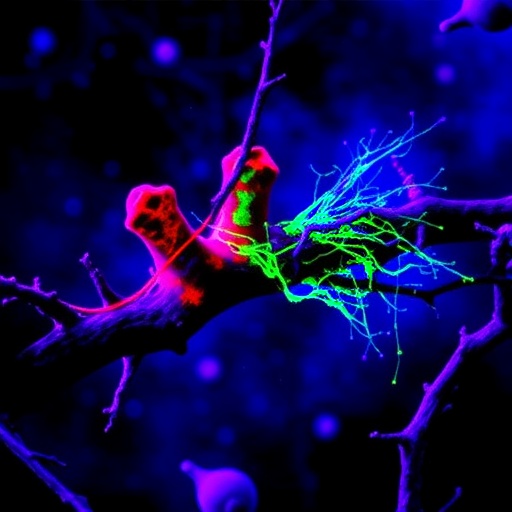The adaptive immune system, long celebrated for its vital role in defending the body against pathogens and external threats, is now recognized as a far more complex player in human health. Beyond merely guarding against infection, recent research highlights its crucial involvement in cancer surveillance, tissue regeneration, and perhaps most intriguingly, the regulation of the aging process itself. This paradigm shift opens new avenues for understanding how age-related immune changes may not only reflect the process of aging but actively drive it. The groundbreaking study by Delgado-Pulido, Yousefzadeh, and Mittelbrunn, published in Nature Aging, offers an in-depth exploration into how the adaptive immune system transforms as we age, evolving from a protector into a potential saboteur of tissue and systemic health.
Aging is invariably accompanied by a decline in the efficacy of the immune response, often referred to as immunosenescence. However, the adaptive immune system’s deterioration transcends mere decline in functionality; it adopts a dualistic role with profound implications. On the one hand, the system’s waning capacity impairs immunosurveillance, the critical process by which the body identifies and clears damaged or senescent cells. On the other hand, aging adaptive immune cells themselves become culprits by often assuming pro-inflammatory and autoaggressive phenotypes that exacerbate tissue damage and chronic inflammation—a hallmark of aging known as inflammaging.
One of the most intriguing revelations from Delgado-Pulido and colleagues is the concept that the adaptive immune system’s age-related changes contribute to the aging process through two fundamentally distinct mechanisms. The first mechanism is the failure of immune surveillance. As adaptive immune cells, particularly lymphocytes, lose their potency over time, they become less effective at detecting and eliminating dysfunctional cells. These damaged or senescent cells accumulate within tissues, secreting pro-inflammatory factors that disrupt local homeostasis and impair regenerative processes. The consequence is a vicious cycle where tissue integrity deteriorates, function declines, and ultimately, age-related pathologies emerge.
.adsslot_YOspSTXwbU{ width:728px !important; height:90px !important; }
@media (max-width:1199px) { .adsslot_YOspSTXwbU{ width:468px !important; height:60px !important; } }
@media (max-width:767px) { .adsslot_YOspSTXwbU{ width:320px !important; height:50px !important; } }
ADVERTISEMENT
Of particular importance is the role of the gut, a critical organ system where immune-tissue homeostasis is tightly regulated by a complex interplay between the adaptive immune system and the microbiota. The gut mucosa represents a frontline of interaction between the host immune system and trillions of microorganisms. In youth, adaptive lymphocytes maintain a careful balance, promoting tolerance to beneficial microbes while mounting defenses against pathogens. However, with aging, this immune-microbiota harmony is lost. Impaired immune surveillance in the gut leads to dysbiosis, disruption of barrier integrity, and excessive inflammation, which not only compromises gut health but has systemic repercussions on aging and metabolic regulation.
The second mechanism highlighted by the researchers involves the transformation of adaptive immune cells themselves into sources of chronic inflammation and tissue damage. Aging lymphocytes often acquire what can be described as a “rogue” phenotype—characterized by increased secretion of pro-inflammatory cytokines and autoantibodies, as well as altered interactions with other immune and non-immune cells. These phenotypic changes do not simply reflect a loss of function but represent an active pathogenic process whereby the adaptive immune system drives tissue senescence, fibrosis, and degeneration. This shift from a healing to harmful role fuels inflammaging, which is increasingly recognized as a critical factor in common age-related diseases including neurodegeneration, cardiovascular disease, and metabolic disorders.
The interplay between the immune system and cellular senescence is particularly noteworthy. Cellular senescence—where cells lose the ability to divide and secrete inflammatory and tissue-damaging factors—has dual roles, acting as a tumor suppressive mechanism in youth but becoming maladaptive in aging. Adaptive immune cells are essential in clearing senescent cells under normal conditions, but when their surveillance capacity diminishes, senescent cell accumulation spikes. Worse yet, the pro-inflammatory lymphocyte phenotypes seen in aged individuals may further induce senescence in neighboring cells, amplifying tissue dysfunction in a feed-forward loop.
At the molecular level, several factors underpin these age-related immune changes. Chronic antigenic stimulation, metabolic alterations, telomere attrition, and altered signaling pathways all contribute to the declining quality and changing function of adaptive lymphocytes. For example, T cells show reduced proliferative capacity and changes in surface marker expression, such as PD-1 and CTLA-4, which modulate their activity and exhaustion status. B cells also undergo phenotype shifts, producing more autoantibodies and less protective antibody diversity. These cellular and molecular alterations provide mechanistic insights into how the adaptive immune system’s recalibration with age both compromises defense and accelerates pathology.
Importantly, this model of immune dysregulation in aging opens exciting opportunities for therapeutic intervention. By better understanding the specific changes that drive immune dysfunction and pathogenicity, researchers envision strategies to rejuvenate immune surveillance capacities or to specifically suppress the harmful, pro-inflammatory phenotypes of aged lymphocytes. Such approaches could profoundly improve tissue regeneration, restore homeostasis, and reduce inflammaging, ultimately promoting healthier aging and potentially extending health span.
One avenue under active investigation is the modulation of immune checkpoint pathways and metabolic reprogramming of adaptive immune cells in aged individuals. Pharmacological agents or biologics that can reverse T cell exhaustion or reinvigorate their senescent cell clearance capabilities are promising. Similarly, targeting aberrant B cell responses may mitigate autoimmunity-related tissue damage. Another complementary approach might involve manipulating the gut microbiota or the gut-associated lymphoid tissue to restore the delicate immune-microbiota equilibrium for systemic benefits.
These insights also elevate the importance of personalized medicine in aging research. Since immune aging is influenced by genetics, environment, infection history, and lifestyle factors, interventions may need to be tailored to an individual’s unique immune landscape. Biomarkers reflecting adaptive immune cell status and inflammation profiles may guide the timing and type of immunomodulatory treatment, optimizing therapeutic outcomes while minimizing risks.
Moreover, this research challenges us to expand our perspective on the immune system beyond its canonical roles. Adaptive immunity is not a static, isolated network but a dynamic interface that shapes and is shaped by tissue physiology, microbial milieu, and systemic metabolic states. As this holistic view gains traction, it reshapes conventional paradigms of aging biology, inspiring novel hypotheses about how immune dysregulation intersects with other hallmarks of aging such as genomic instability, epigenetic alterations, and mitochondrial dysfunction.
Delgado-Pulido and collaborators also emphasize the bidirectional relationship between immune aging and inflammaging. Not only do aged lymphocytes promote a pro-inflammatory environment, but chronic, low-grade inflammation in tissues further drives immune cell dysfunction and senescence. This reciprocal interaction highlights the potential of combined anti-inflammatory and immune-enhancing therapies as a promising dual-pronged strategy in combating age-associated disorders.
Lastly, the translational implications of these findings are vast. Understanding the adaptive immune system’s reshaping could inform vaccine strategies for the elderly, improve outcomes in cancer immunotherapies, and provide insights into managing autoimmune diseases that disproportionately affect older adults. By shifting therapeutic goals from simply boosting immunity to refining immune quality and composition, medicine edges closer to interventions that support resilience and repair in the aging organism.
In summary, the work presented by Delgado-Pulido, Yousefzadeh, and Mittelbrunn transforms our understanding of the adaptive immune system’s complex journey through aging. Rather than serving solely as a defender, aged adaptive immunity emerges as a double-edged sword whose failings and malfunctions can accelerate tissue decline and systemic aging. This new framework propels immunology and aging biology into exciting frontiers, heralding a future where modulating immune system dynamics becomes a cornerstone of healthy longevity.
Subject of Research: Aging-related changes in the adaptive immune system and their impact on inflammaging, tissue homeostasis, and age-associated pathologies.
Article Title: Aging reshapes the adaptive immune system from healer to saboteur.
Article References:
Delgado-Pulido, S., Yousefzadeh, M.J. & Mittelbrunn, M. Aging reshapes the adaptive immune system from healer to saboteur. Nat Aging 5, 1393–1403 (2025). https://doi.org/10.1038/s43587-025-00906-1
Image Credits: AI Generated
DOI: https://doi.org/10.1038/s43587-025-00906-1
Tags: adaptive immune system roleadaptive immunity and agingage-related immune dysfunctionaging immune system changescancer surveillance and aginghealth implications of aging immune systemimmune system and chronic inflammationimmune system evolution with ageimmunosenescence and healthpro-inflammatory immune responsetissue regeneration and immunityunderstanding immune system in aging





